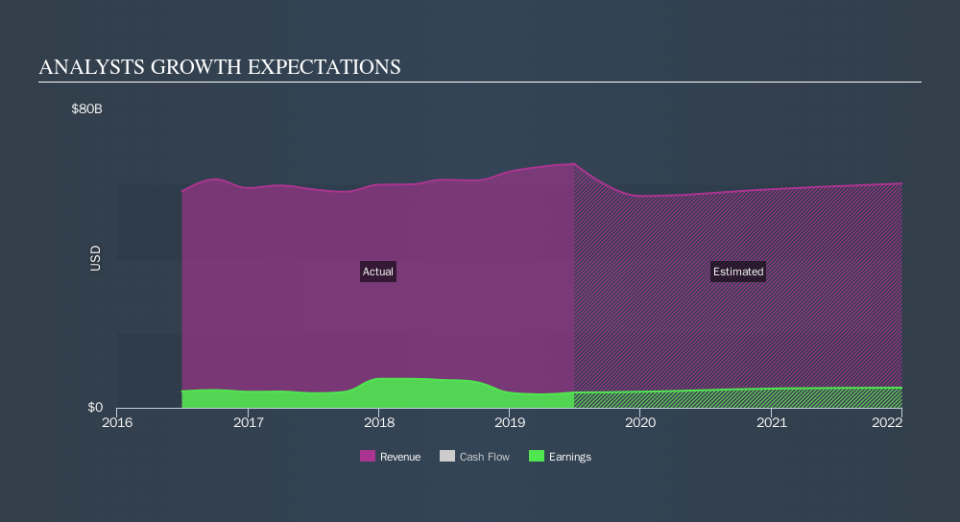What Is Prudential Financial, Inc.'s (NYSE:PRU) Share Price Doing?

Today we're going to take a look at the well-established Prudential Financial, Inc. (NYSE:PRU). The company's stock saw significant share price movement during recent months on the NYSE, rising to highs of $103.27 and falling to the lows of $78.29. Some share price movements can give investors a better opportunity to enter into the stock, and potentially buy at a lower price. A question to answer is whether Prudential Financial's current trading price of $79.65 reflective of the actual value of the large-cap? Or is it currently undervalued, providing us with the opportunity to buy? Let’s take a look at Prudential Financial’s outlook and value based on the most recent financial data to see if there are any catalysts for a price change.
Check out our latest analysis for Prudential Financial
Is Prudential Financial still cheap?
Great news for investors – Prudential Financial is still trading at a fairly cheap price. In this instance, I’ve used the price-to-earnings (PE) ratio given that there is not enough information to reliably forecast the stock’s cash flows. I find that Prudential Financial’s ratio of 7.97x is below its peer average of 15.86x, which suggests the stock is undervalued compared to the Insurance industry. Although, there may be another chance to buy again in the future. This is because Prudential Financial’s beta (a measure of share price volatility) is high, meaning its price movements will be exaggerated relative to the rest of the market. If the market is bearish, the company’s shares will likely fall by more than the rest of the market, providing a prime buying opportunity.
Can we expect growth from Prudential Financial?
Future outlook is an important aspect when you’re looking at buying a stock, especially if you are an investor looking for growth in your portfolio. Although value investors would argue that it’s the intrinsic value relative to the price that matter the most, a more compelling investment thesis would be high growth potential at a cheap price. Prudential Financial’s earnings over the next few years are expected to increase by 28%, indicating a highly optimistic future ahead. This should lead to more robust cash flows, feeding into a higher share value.
What this means for you:
Are you a shareholder? Since PRU is currently undervalued, it may be a great time to accumulate more of your holdings in the stock. With a positive outlook on the horizon, it seems like this growth has not yet been fully factored into the share price. However, there are also other factors such as financial health to consider, which could explain the current undervaluation.
Are you a potential investor? If you’ve been keeping an eye on PRU for a while, now might be the time to enter the stock. Its buoyant future outlook isn’t fully reflected in the current share price yet, which means it’s not too late to buy PRU. But before you make any investment decisions, consider other factors such as the strength of its balance sheet, in order to make a well-informed buy.
Price is just the tip of the iceberg. Dig deeper into what truly matters – the fundamentals – before you make a decision on Prudential Financial. You can find everything you need to know about Prudential Financial in the latest infographic research report. If you are no longer interested in Prudential Financial, you can use our free platform to see my list of over 50 other stocks with a high growth potential.
We aim to bring you long-term focused research analysis driven by fundamental data. Note that our analysis may not factor in the latest price-sensitive company announcements or qualitative material.
If you spot an error that warrants correction, please contact the editor at editorial-team@simplywallst.com. This article by Simply Wall St is general in nature. It does not constitute a recommendation to buy or sell any stock, and does not take account of your objectives, or your financial situation. Simply Wall St has no position in the stocks mentioned. Thank you for reading.

